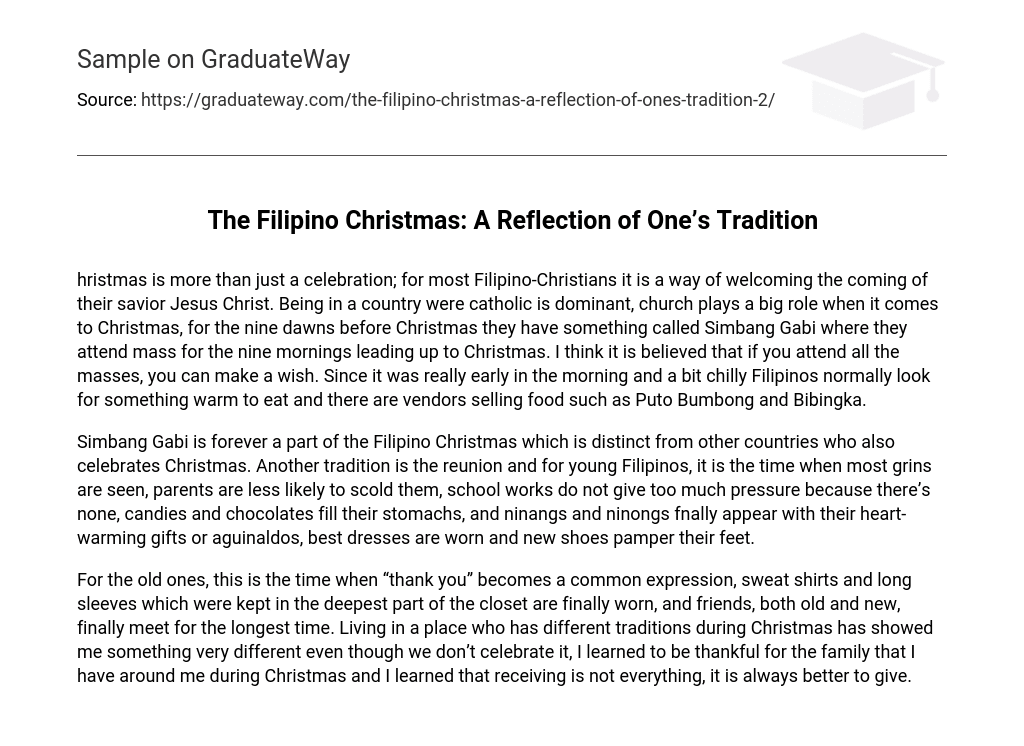Christmas holds a deeper significance for Filipino-Christians as it symbolizes the anticipation of the birth of Jesus Christ, their savior. In a predominantly Catholic country, the church plays a vital role during this festive season. One notable religious practice is the Simbang Gabi, wherein believers attend a series of nine morning masses leading up to Christmas. It is believed that attending all these masses grants one the opportunity to make a wish. Due to the early and cool morning hours, Filipinos seek warmth in their meals, often purchasing traditional foods like Puto Bumbong and Bibingka from food vendors.
Simbang Gabi is a significant component of the Filipino Christmas, setting it apart from other countries’ celebrations. Alongside this tradition is the joyous reunions, particularly for young Filipinos. During this time, smiles are abundant, and parents are less inclined to scold them. The absence of school work alleviates pressure, while their stomachs are filled with candies and chocolates. Additionally, beloved godparents finally grace their presence with heartfelt gifts or aguinaldos. Best dresses are adorned, and new shoes provide comfort for their feet.
For the older generation, this is the time when the phrase “thank you” becomes a prevalent expression. It is also when sweat shirts and long sleeves, which were previously stored in the depths of the closet, are finally worn. Furthermore, this is a season for reuniting with both old and new friends after an extended period of time apart. Living in a place with different Christmas traditions has exposed me to something unique. Despite not celebrating the holiday, it has taught me to appreciate the presence of my family during this time. Moreover, I have come to understand that receiving is not everything; it is always more fulfilling to give.





